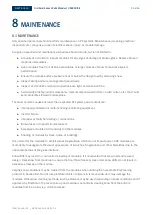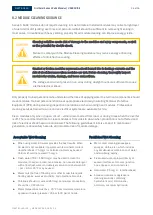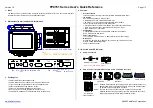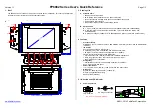
FIRST SOLAR
First Solar Series 6 CuRe Modules | USER GUIDE
17 of 26
FIRST SOLAR, INC. | MPD-00600-06-C REV 1.0
7.7
WIRE MANAGEMENT
All wire management shall comply with the applicable NEC/IEC codes and standards for maintaining and
managing wires, as well as any applicable local requirements determined by local authorities having
jurisdiction. This document includes evaluation of general wire management requirements based on
interpretation of the following codes and standards and does not substitute for a comprehensive evaluation
of applicable requirements:
►
NEC 2017
o
300.3(C)(2) – Conductors of Different Systems
o
334.30 – Support and Securement Spacing
o
338.24 – Cable Bend Radius Requirements for Type USE cable
►
IEC
o
62548:2016, 7.3.7.3 – Erection Method
o
62548:2016, 7.3.8 – Segregation of AC and DC Circuits
o
60364-5-52:2009, 522.8.3 – Cable Bend Radius
Below is a list of best practices that applies to the majority of wire management scenarios:
►
The connectors, X/T joints, and in-line fuses should not be in direct contact with the metal frame or
structure. It is recommended that insulated cables do not come in direct contact with the metal
frame or structure, unless unavoidable, to minimize stresses on components.
►
The installation of harnesses, harness jumpers, harness whips, and PV array cables (or “Homerun”
cables) should not subject the connectors, X/T joints, and in-line fuses to tensile loads.
►
Cable ties should be a minimum distance of 25 mm (1 in) from connectors, X/T joints, and in-line
fuses.
►
Cables should not maintain constant contact with the edges of glass-to-glass solar module
laminates.
►
Cable ties should be tensioned such that there is at least 13 mm (0.5 in) (two-finger-gap) between
the top of the cable bundle and the bottom of the frame.
Figure 10: Grounding Hole & Wire Management Hole Detail from Frame Center
7
Quantity of differentiation holes vary based on Series 6 CuRe model type, referenced in Figure 2.
DIFFERENTIATION HOLES










































